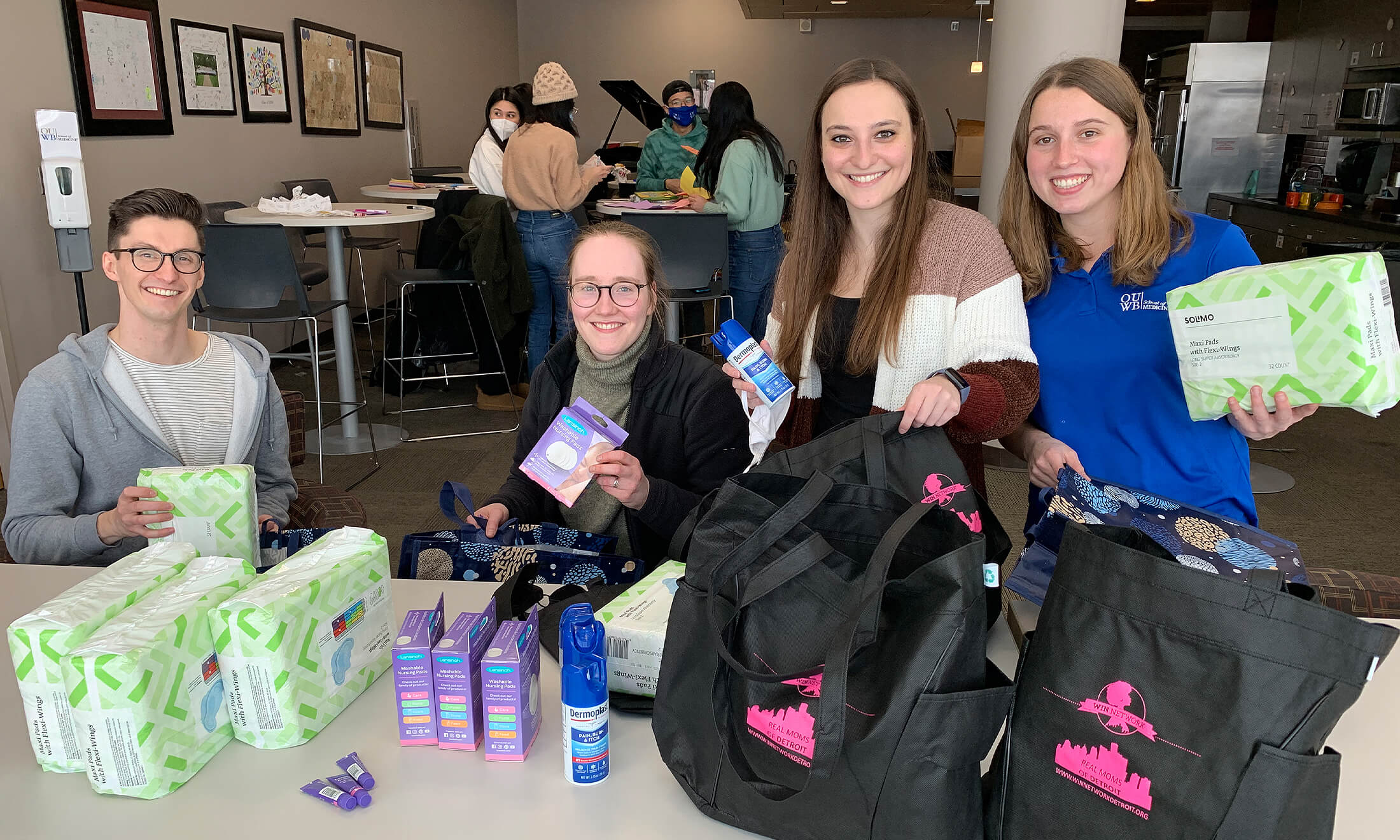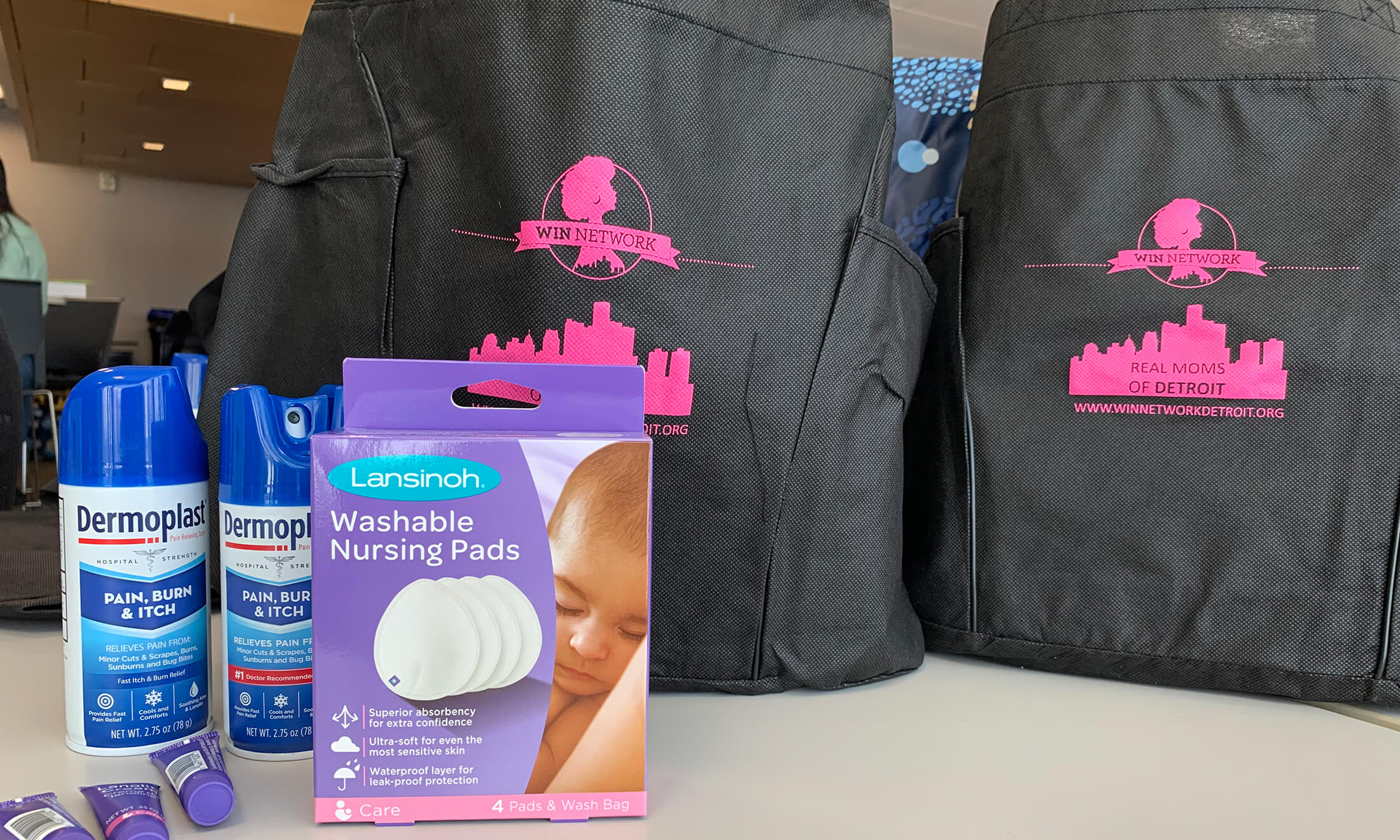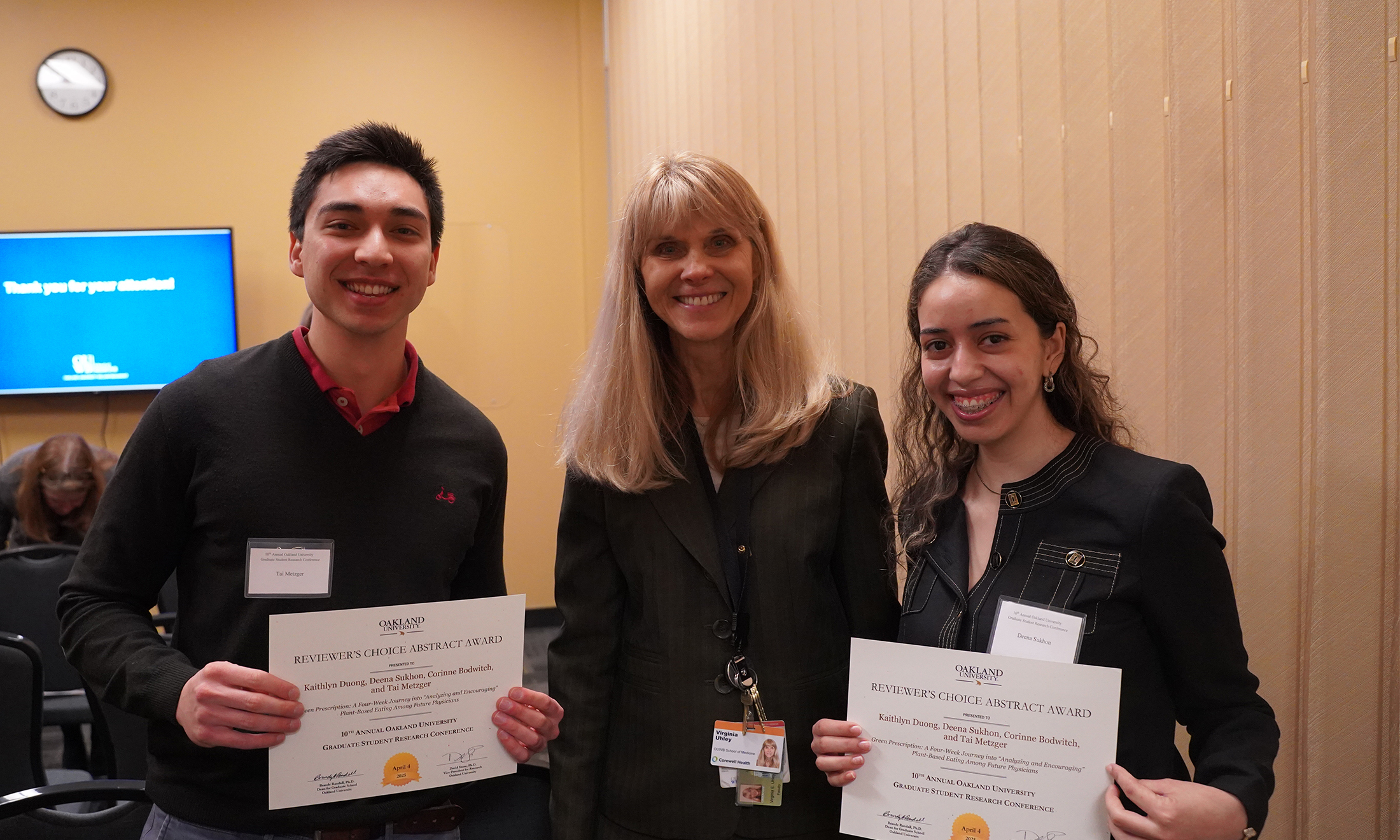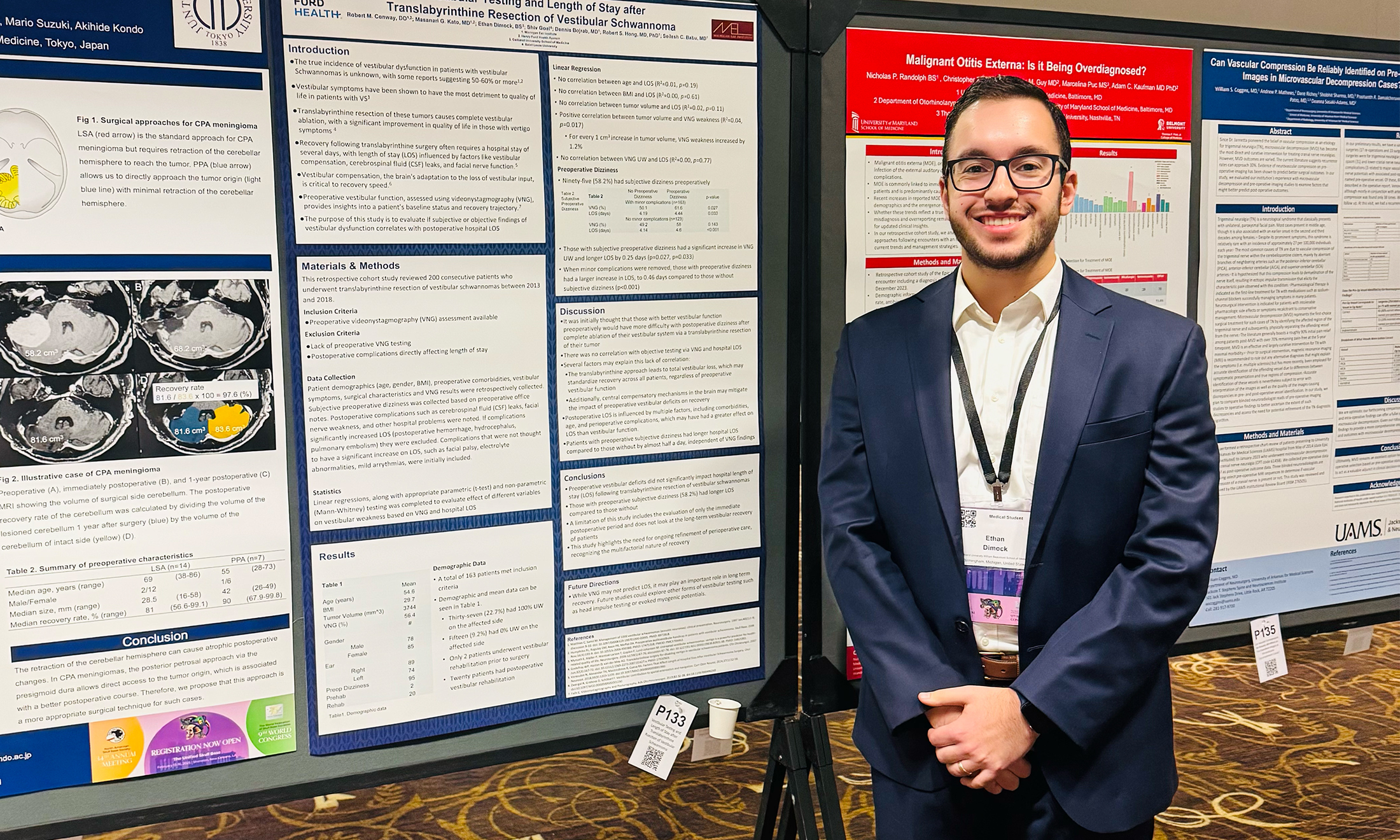‘Do something about it’
Project led by OUWB student raises awareness of infant, maternal mortality
Second-year OUWB medical student Leah Rotenbakh expects to advocate for patients as a physician — and a recent community service project she led helped her better understand the importance of the role.
Rotenbakh led creation of a four-part campaign designed to raise awareness of the issues of infant and maternal mortality among all medical schools in Michigan.
The campaign included lectures from physicians who work in women’s health to preparation of care packages for new mothers from economically and socially marginalized communities.
Rotenbakh led development of the program through her role as director of community service for the Michigan State Medical Society’s Governing Council.
“I wanted people to not only learn about (infant and maternal mortality), but feel empowered to do something in different ways,” says Rotenbakh.
By the numbers: infant, maternal mortality rates
Infant mortality is the death of an infant before his or her first birthday.
According to Women-Inspired Neighborhood (WIN) Network: Detroit — a program of the Detroit Regional Infant Mortality Reduction Task Force — infant mortality is driven by health and social factors, aka “social determinants of health.” WIN Network says examples of social factors include gender, discrimination, exposure to crime and violence, access to resources to meet basic needs, income, and level of daily stress.
The Centers for Disease Control and Prevention says the infant mortality rate in the U.S. was 5.6 deaths per 1,000 live births in 2019.
Locally, WIN Network Detroit says that from 2013 to 2019, the infant mortality rate for Black infants in Detroit worsened while the infant mortality rate for white infants improved. The Black infant mortality rate from 2016-18 in Detroit was 15.9 per 1,000 live births.
Through its Healthy People 2030 initiative, the U.S. Department of Health and Human Services aims to reduce the rate of all infant deaths.
Concurrently, maternal mortality is the death of a woman during pregnancy, at delivery, or soon after delivery.
The CDC reports about 700 women in the U.S. die annually as a result of pregnancy or delivery complications. According to the Michigan Department of Health and Human Services, 102 women died of pregnancy-related causes in Michigan between 2011 and 2018.
MDHHS says the most common causes of pregnancy-related death in Michigan is hemorrhage (14.8%), followed by infection/sepsis, thrombotic pulmonary embolism, and hypertensive disorders of pregnancy (13.1%). Cardiomyopathy is a less common, but significant cause of pregnancy-related maternal death.
Tackling the issues
Rotenbakh became more aware of infant and maternal mortality issues largely through her role on the Michigan State Medical Society (MSMS) Governing Council.
“When I became the director of community service, I thought this would be a great opportunity to help medical students in the state learn more about racial disparities and health outcomes in women's health,” says Rotenbakh, who also serves as president of the OUWB American Medical Association chapter.
To address the issues of infant and maternal mortality, the series Rotenbakh developed began with lectures by physicians working in women’s health. Another educational component addressed policies related to the topics. Rotenbakh says about 60 medical students from across the state participated in the educational sessions.
“Our main goal was, ‘Let’s do something about it…let’s not just sit here and learn about these issues,” she says. “We are medical students.”
The next part of the campaign centered on advocacy, says Rotenbakh. The team created a template for people to write letters to Michigan legislators in support of current bills centered on topics like racial inequality.
| More from OUWB |
|
OUWB students bring their skills to Beaumont OUWB’s student-run clinic marks 5 years Nearly 60 OUWB community members donate blood during student-led drive |
The third part of the campaign took the advocacy aspect further. Rotenbakh says postcards were created for people to fill out in support of legislation that addresses topics related to infant and maternal mortality. The postcards were placed in the student lounge in OUWB’s O’Dowd Hall for medical students.
For the fourth campaign component, the team created care packages for WIN Network Detroit to distribute. The care packages included Dermoplast brand spray for postpartum pain, feminine hygiene products, and basics such as deodorant and toothpaste. Funding for the packages came from OUWB’s Compass program, the AMA Medical Student Outreach Program, and MSMS.
Courtney Latimer, program manager, WIN Network, says the packages will be distributed to women who participate in WIN Network’s group prenatal care in their third trimester.
“It’s refreshing to see medical students having a focus on equity,” says Latimer. “A generation of doctors who focus on equity and wellness in addition to wellness will be the driving force behind finally changing our health outcomes in this country and eliminating unnecessary health disparities among minority and vulnerable populations.”
Overall, Rotenbakh says the experience was “very illuminating.”
“I learned a lot about how much you can actually do as a medical student,” she says. “It really showed me how you can have a voice and make a difference, even though we’re not working directly with patients yet.

 March 22, 2022
March 22, 2022
 By Andrew Dietderich
By Andrew Dietderich










